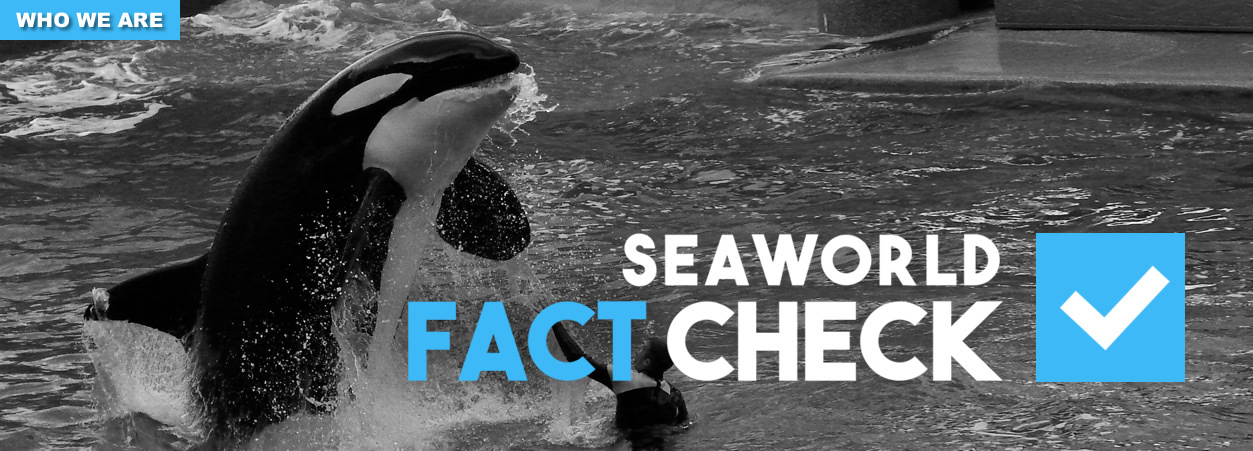| SEAWORLD FACT CHECK:
Unlike most mammals, whales and dolphins are “voluntary breathers” – they must be conscious and awake to some degree to breathe (see, e.g., Lyamin et al. 2008). Because diazepam (Valium) can decrease the responsiveness of the respiratory system in animals1, this side effect is of particular concern in cetaceans. SeaWorld did not address this concern in its response.
In addition, research has demonstrated that diazepam induces sleep in dolphins by reducing blood flow to the brain and by inhibiting the ability of the brain to process nourishment (Ridgway et al. 2006). In essence, a dolphin on valium can be functionally asleep, as well as have his or her normal sleep patterns disrupted.
Diazepam’s use for stimulating appetite is questionable in cetaceans, because in some animals (most notably cats) it appears to act by enhancing the taste and flavor of food, not by stimulating natural hunger mechanisms2. While dolphins have taste buds on their tongues, recent research has demonstrated that they are unable to taste anything other than salt (Zhu et al. 2014); therefore, diazepam would likely have a negligible effect on their appetite.
Known side effects of diazepam in animals: “The most common signs seen, at a wide range of dosages, are CNS depression, respiratory depression, ataxia, weakness, disorientation, nausea, and vomiting. Some animals, especially at high doses, may show CNS excitation instead of depression (paradoxical reaction), which may be followed by CNS depression. Other common signs are hypothermia, hypotension, tachycardia, muscle hypotonia, and meiosis. Some cats develop signs of acute, potentially fatal hepatic failure after repeated oral administration of diazepam for several days1.”
References:
Lyamin, O.I., Manger, P.R., Ridgway, S.H., Mukhametov, L.M., and Siegel, J.M. 2008. Cetacean sleep: An unusual form of mammalian sleep. Neuroscience and Biobehavioral Reviews 32: 1451-1484.
Ridgway, S., Houser, D., Finneran, J., Carder, D., Keogh, M., Van Bonn, W., Smith, C., Scadeng, M., Dubowitz, D., Mattrey, R., and Hoh, C. 2006. Functional imaging of dolphin brain metabolism and blood flow. The Journal of Experimental Biology 209: 2902-2910.
Zhu, K., Zhou, X., Xu, S., Sun, D., Ren, W., Zhou, K., and Yang, G. 2014. The loss of taste genes in cetaceans. BMC Evolutionary Biology 14: 218-227.
1 http://www.merckvetmanual.com/a
2 http://www.merckvetmanual.com/b
_____________
SEAWORLD SAYS:
Sure thing. Most people are aware of our professional veterinary health program, which is dedicated to protecting the health of the animals in our parks, along with the animals in our rescue and rehabilitation program. Just like other veterinarians and medical doctors, we use medications to treat illness and injury according to veterinary best practice. Those medications fall into broad categories: antimicrobials, anti-inflammatories, analgesics, anesthetics, etc.
Psychoactive medications are those that have an effect on the central nervous system. While there is a long list of medications within that category we use very few of them, and then almost exclusively for sedation and general anesthesia for minor procedures or surgery.
Diazepam, which at very low doses has appetite stimulant and anxiolytic properties, can be helpful for some animals too. It might be used for an ill animal that still needs to eat to maintain its nutritional status. A good example is the Florida manatee. When these animals are rescued, they are ill, and may be anxious, and often reluctant to eat. The use of diazepam can help to calm them and stimulate their appetite. The critical point is that, like all medications, we use them as clinically indicated; as judiciously and as responsibly as possible. The use of medication like diazepam in veterinary practice is common and discussed in greater detail here or here.
|

